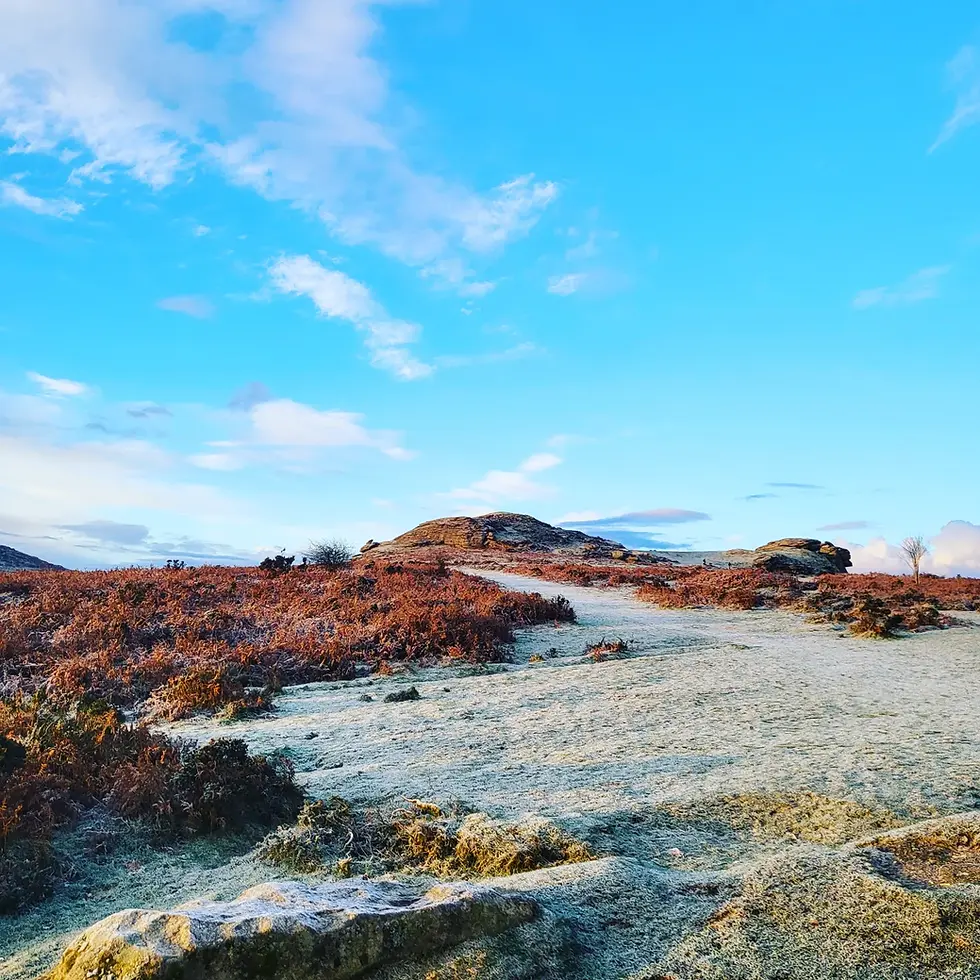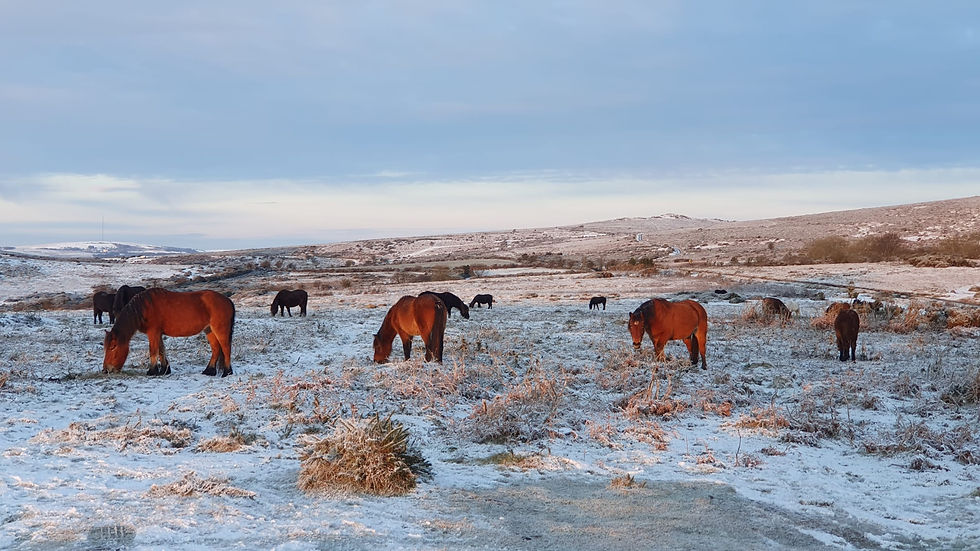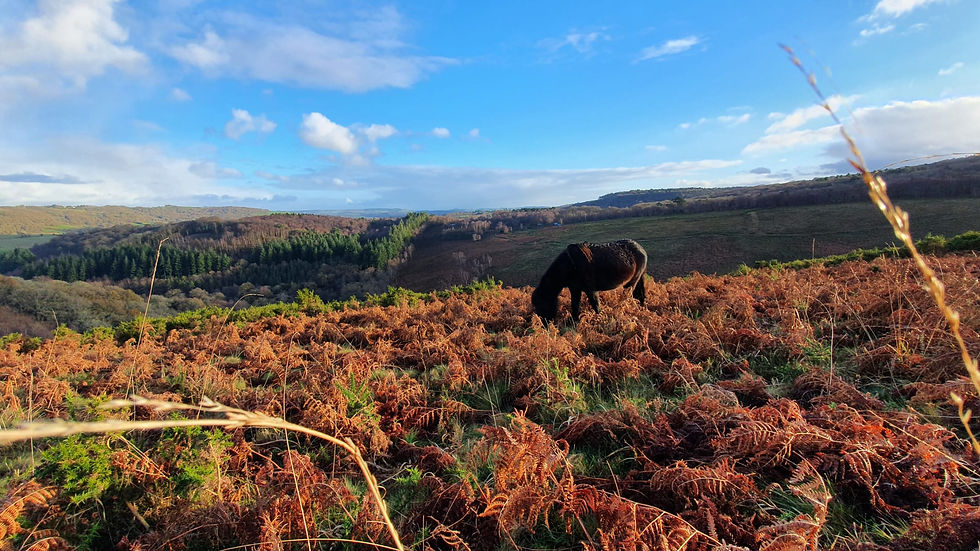Seasons on Dartmoor
- Jack Dicker
- Aug 19
- 3 min read

There is something grounding about the way the seasons roll across Dartmoor. They shape the colour of the land, the way the rivers run, the animals that stir, and the small details we notice on a walk. Walking here through the year is never the same twice. Families that return to the same path will always find something different waiting for them. It might be the first burst of bluebells in spring, the hum of insects in summer heat, the sharp scent of autumn leaves, or the crisp stillness of a frosty morning. Each season asks us to slow down, to look carefully, and to step with a little more awareness.
Spring
Begins gently, with the moors slowly waking up. Skylarks climb high in song while lambs kick their legs in the fields below. Frogs fill the ponds, and buds push through moss and stone. Walkers need to be aware of nesting birds that hide in the grass at this time of year. Staying on clear paths is the safest way to protect them. Spring showers can arrive quickly, so it is wise to bring layers and keep children warm between bursts of play. For more on walking responsibly, see our blog on Rights and Access on Dartmoor.
Summer
Brings long light evenings, tall grasses, and the sight of ponies resting on the ridges. Families often feel most drawn to the moors in this season, but with the warmth comes new challenges. Adders stir in the bracken and may be found sunbathing on warm stones. They are shy creatures that avoid confrontation, but dogs can easily disturb them, so keeping them close is important. Strong sun can make the moor feel exposed, and water is often further away than it first looks, so carrying enough to drink is essential. If you’d like to learn more about the wildlife that thrives here, take a look at our Wildlife Wonders blog.
Autumn
Shifts the land again, painting the tors in softer shades. The heather fades, bracken turns bronze, and the first frosts arrive. Streams often swell after heavy rain, changing how a path feels underfoot. This is a beautiful season for spotting fungi, with toadstools scattered like lanterns across the woodland floor. Families walking at this time of year should be careful with slippery stones and remember that some mushrooms are best admired without touching.
Winter
Draws Dartmoor into its quietest state. Frosts bite deep into the soil, bogs freeze, and the ridges carry sharp winds. Yet on the stillest days there is no better place to feel the openness of the land. Snow occasionally falls, creating a magical scene but also hiding the risks beneath. Frozen ground can make tracks treacherous and the cold carries more weight when walking with children. Careful planning, warm clothing, and shorter routes help families enjoy this season safely. You can also read our guide to Respecting Dartmoor for more tips on caring for the land while exploring.
The seasons
Remind us that Dartmoor is alive. Every walk is an invitation to notice small details and share them with one another. Families who return through the year not only find the moor changing but also watch themselves changing alongside it. These rhythms connect us to something bigger, reminding us that the land has its own pace, and that by moving with it we can walk well.



Comments